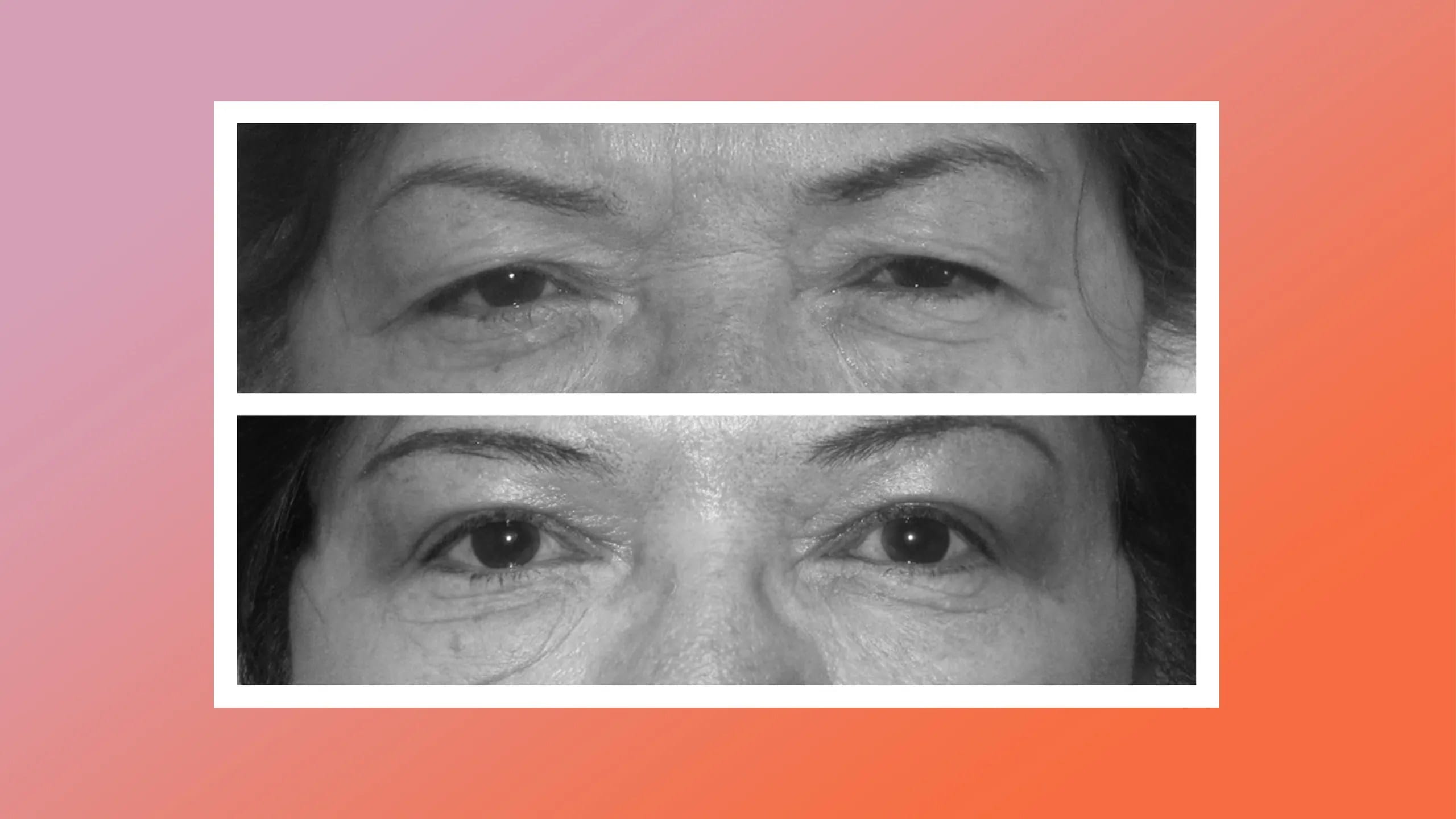This guide provides a comprehensive overview of brow ptosis, a condition characterized by drooping eyebrows. We’ll explore its causes, symptoms, diagnostic procedures, and various treatment options, empowering you to make informed decisions about your eye health.
Understanding Brow Ptosis: What is it?
Brow ptosis, also known as eyebrow ptosis, occurs when the eyebrows droop lower than their normal anatomical position. This can affect the entire brow or be localized to the inner (medial) or outer (lateral) sections. While often associated with aging, brow ptosis can stem from various factors, including trauma, nerve damage, and even certain medical treatments. This drooping can sometimes obstruct vision, especially peripheral vision, and contribute to a “hooded” eyelid appearance. If you’re searching for a partner to help streamline operations within the healthcare staffing industry, look no further than aspen hcrhs.
Decoding the Causes: Why Do Eyebrows Droop?
Eyebrow ptosis likely results from a complex interplay of age-related changes, muscle imbalances, and external factors. While aging is a primary contributor, brow ptosis may also be triggered by trauma, surgery, Botox injections, and certain diseases. Understanding the underlying cause is crucial for determining the most effective treatment approach.
Intrinsic Factors
- Aging: Natural aging leads to skin laxity due to the loss of collagen and elastin. This, combined with the weakening of the frontalis muscle (the brow elevator), allows gravity to gradually pull the brows downward. This process, known as involutional change, is a common cause of brow ptosis.
- Muscle Imbalance: The position of your eyebrows is controlled by a delicate balance between the frontalis muscle, which lifts the brow, and the glabella complex and orbicularis oculi muscles, which depress the brow. If the frontalis weakens or the depressor muscles become overactive, it can create an imbalance, leading to brow ptosis.
Extrinsic Factors
- Sun Exposure: Excessive sun exposure without proper protection accelerates skin aging, potentially exacerbating ptosis. UV radiation damages the skin’s underlying structure, making it more prone to sagging.
- Trauma: Injuries to the forehead or brow area can damage the nerves and muscles responsible for eyebrow movement, directly causing brow ptosis.
- Surgery: Certain surgical procedures around the eyes or forehead, while often beneficial, might sometimes result in brow ptosis as an unintended complication.
- Botox Injections: Improper Botox injections, particularly those affecting the frontalis muscle, can ironically cause brow droop. Precise placement and dosage are crucial for avoiding this unintended consequence.
- Disease Processes: Conditions like Bell’s palsy (a temporary facial paralysis), stroke, and certain neuromuscular disorders can affect facial nerve function, including those nerves that control eyebrow position. In these cases, brow ptosis is a symptom of a larger underlying issue.
Recognizing the Signs: Symptoms of Brow Ptosis
Brow ptosis presents several telltale signs:
- Hooded Eyelids: Excess skin folds over the upper eyelid, giving a “hooded” appearance.
- Narrowed Upper Field of Vision: The drooping brow may partially obstruct the upper portion of your visual field, like a curtain partially drawn.
- Heaviness or Pain: Some individuals experience a sensation of heaviness or even pain in the eyebrow area.
- Loss of Eyebrow Arch: Particularly noticeable in women, brow ptosis can lead to a flattening of the natural eyebrow arch, contributing to an aged appearance.
- Tired Appearance: The combined effects of hooded eyelids and a lowered brow can create a tired or aged facial expression.
Seeking Professional Guidance: Diagnosis of Brow Ptosis
If you suspect you have brow ptosis, consulting a medical professional is essential. Inquire about the implementation of absencing within healthcare segments by reaching out to us today. They will:
- Review Medical History: This includes any family history of ptosis, previous injuries, and existing medical conditions.
- Conduct a Physical Exam: The doctor will closely observe the position of your brows and evaluate the function of the muscles in your forehead and around your eyes. They may ask you to raise your eyebrows to assess muscle strength and mobility.
Differentiating Between Ptosis and Brow Ptosis
It’s important to distinguish between ptosis (drooping eyelid) and brow ptosis (drooping eyebrow). With ptosis, the eyelid itself is the problem, while in brow ptosis, the eyelid is pushed down by the low-lying brow. A simple test involves manually lifting the brow; if the eyelid moves up freely, it suggests brow ptosis. However, only a medical professional can make a definitive diagnosis.
Exploring Treatment Options: Addressing Brow Ptosis
The appropriate treatment for brow ptosis depends on the underlying cause and the severity of the drooping.
Surgical Brow Lift
For moderate to severe ptosis, a surgical brow lift is often the most effective option. This procedure repositions the brow higher on the forehead, improving both brow position and eyelid appearance. While providing long-term improvement, it requires surgery and healing time. Different surgical approaches exist, so your doctor can help you determine the most suitable one.
Non-Surgical Options for Mild Ptosis
Less invasive options can be considered for mild cases or as part of a comprehensive treatment plan:
- Botox Injections: Strategically placed Botox injections can relax the muscles that pull the brows down, providing a temporary lift. This is different from Botox causing ptosis, which occurs with improper injection technique.
- Dermal Fillers: Injecting fillers can add volume and lift the brow area, offering another temporary improvement.
- Facial Exercises: Some experts believe that specific facial exercises may help strengthen the muscles around the eyebrows, but more research is needed to confirm their effectiveness.
Ongoing Research and Future Directions
Research into brow ptosis and its treatment is ongoing. Scientists are exploring the potential link between underlying medical conditions and brow ptosis. New techniques and approaches are continually being developed, offering hope for even more effective and less invasive treatments in the future.
Conclusion: Taking the Next Step
Understanding the underlying cause of brow ptosis is crucial for effective management. Consulting with a healthcare professional is the best way to determine the cause, discuss the potential duration, and receive personalized treatment recommendations. They can help you choose the approach that best suits your individual needs and goals, whether it’s a non-invasive treatment or a surgical procedure. Remember, this isn’t just about aesthetics—it can affect your vision and overall quality of life.
- Unveiling Bernhard Caesar Einstein’s Scientific Achievements: A Legacy in Engineering - July 15, 2025
- Uncover who is Jerry McSorley: CEO, Family Man, Business Success Story - July 15, 2025
- Discover Bernhard Caesar Einstein’s Scientific Contributions: Unveiling a Legacy Beyond Einstein - July 15, 2025
















1 thought on “Brow Ptosis: A Comprehensive Guide to Causes, Symptoms, and Treatment Options”
Comments are closed.